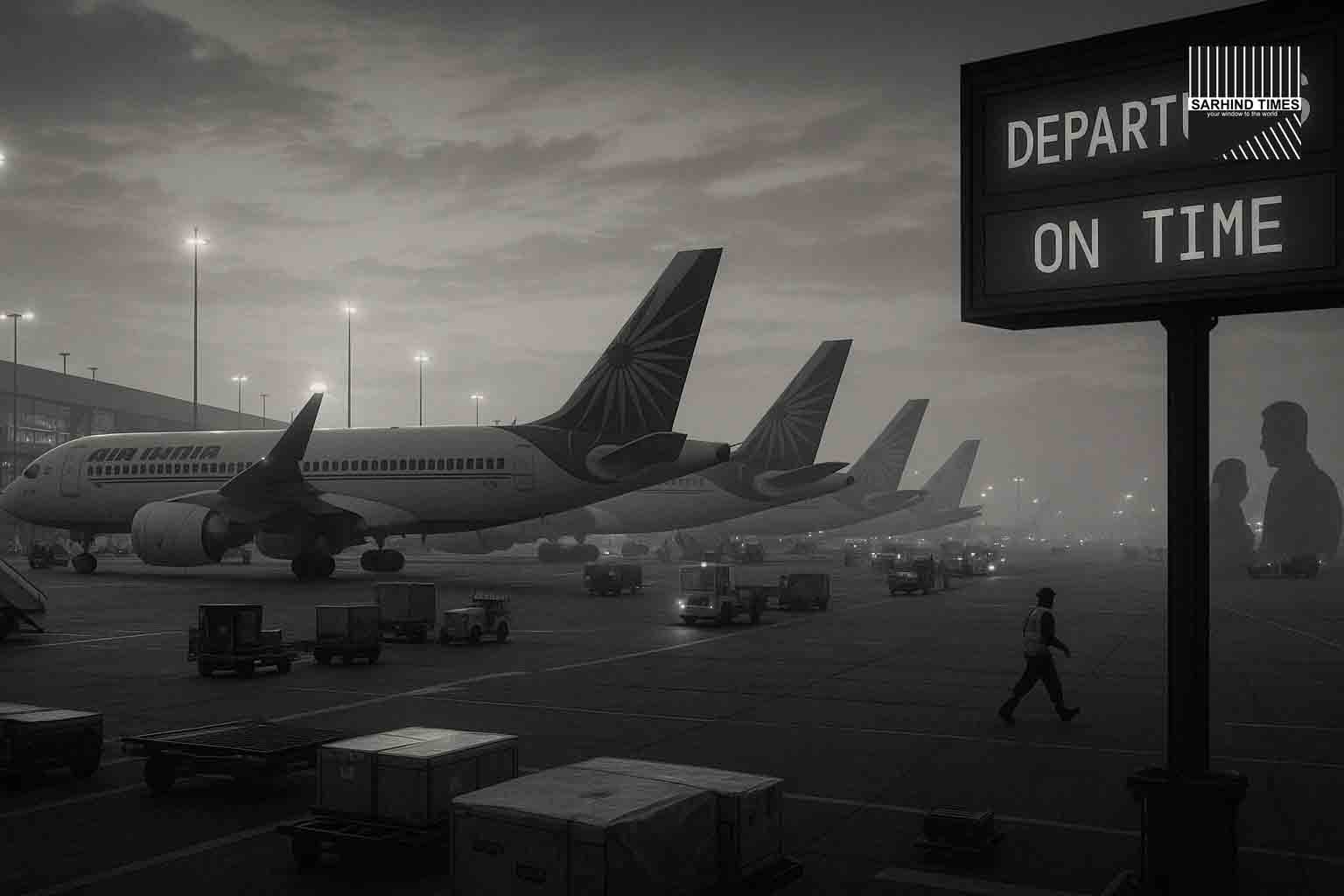By Sarhind Times Aviation Bureau
New Delhi: Hub Ambitions Take Flight
The Tata-owned Air India group has unveiled ambitious plans to scale operations from one of its core hubs, targeting around 90 daily departures as part of its multi-year transformation programme. The move signals a decisive shift toward strengthening hub-and-spoke connectivity, improving on-time performance, and preparing the carrier to reclaim its place among global aviation leaders.
The uplift will align with ongoing fleet induction, slot optimization, and ground-handling upgrades, all aimed at making the hub a model for efficiency and reliability.
A Transformation in Motion
Ever since Tata Sons took control of Air India in 2022, the airline group—which includes Air India, Air India Express, and soon-to-be-merged Vistara—has embarked on one of the most ambitious aviation restructurings in Indian history.
Key pillars of the transformation include:
- Cabin retrofits for a consistent premium experience.
- New narrow-body deliveries for dense domestic and regional routes.
- Network re-optimization to build banked hubs supporting long-haul international services.
- Tighter integration with Vistara’s network (pending regulatory approval) to avoid overlaps and maximize synergies.
The 90 daily departures target is designed not just as a numerical milestone but as a demonstration of improved operational discipline, a critical area where the airline has historically struggled.
Why 90 Departures Matter
Aviation experts note that scaling up departures from a central hub is critical for creating banked connections—clusters of arrivals and departures timed to maximize transfer opportunities for passengers.
“This is how global carriers like Emirates, Qatar Airways, and Singapore Airlines dominate—by offering seamless transfers through efficient hubs. Air India’s attempt to replicate this model is essential if it wants to compete internationally,” said aviation analyst Kapil Kaul.
With 90 departures, the hub will:
- Provide better connectivity for regional passengers feeding into long-haul flights.
- Support hub efficiency, reducing aircraft idle time.
- Pressure competitors in metro-to-metro corridors like Delhi–Mumbai, Delhi–Bengaluru, and Delhi–Hyderabad.
Fleet Expansion: A Critical Backbone
Air India’s transformation is closely tied to its historic aircraft order placed in 2023—over 470 planes split between Airbus and Boeing, including:
- Narrow-body A320neos and Boeing 737 MAX aircraft for short-haul expansion.
- Wide-body A350s and Boeing 787s for long-haul premium markets.
As deliveries begin, these aircraft will not only increase capacity but also introduce better fuel efficiency and lower operating costs.
Integration with Vistara
Pending regulatory approval, Vistara is expected to merge into Air India, creating a single full-service airline under the Tata Group. This integration will:
- Consolidate slot holdings at major airports.
- Streamline fleet utilization.
- Offer passengers a more unified experience.
For the hub in focus, Vistara’s current domestic strengths will complement Air India’s international reach, allowing the 90-departure ambition to materialize faster.
Hub Efficiency: More Than Just Aircraft
Scaling up departures is not just about adding flights. It demands:
- Slot management with airport operators.
- Upgraded ground operations, including baggage handling, catering, and fueling.
- Technology adoption for crew rostering, gate allocation, and turnaround time optimization.
The group recently signed engineering and training partnerships to modernize its operations. Investments in simulators, AI-driven scheduling tools, and staff training are expected to pay dividends as flight banks intensify.
Competitive Pressures
The move will inevitably force rivals to respond. IndiGo, India’s largest domestic airline, has dominated with scale and punctuality. Meanwhile, Akasa Air and other emerging players are eyeing niches in Tier-2 and Tier-3 connectivity.
By creating a hub model with disciplined departures, Air India seeks to differentiate itself with long-haul connections and premium services. But execution will be key—especially in an industry where delays, maintenance issues, and crew shortages can derail even the best-laid plans.
Passenger Benefits
For travelers, the shift could bring:
- More connection options for both domestic and international journeys.
- Shorter layovers due to synchronized arrivals and departures.
- Improved reliability if on-time performance targets are met.
- Enhanced service standards from refurbished cabins and better-trained crews.
Frequent flyers in business corridors are particularly likely to welcome the increase in metro-to-metro frequencies, giving them flexibility in scheduling.
The Road Ahead
Reaching 90 daily departures will not happen overnight. Industry watchers estimate a phased build-up over the next 12–18 months, tied to aircraft deliveries and regulatory approvals for the Air India–Vistara integration.
Yet, the symbolic significance of the target cannot be understated. It signals to employees, passengers, and competitors that Air India intends to move beyond its legacy of delays and inefficiency toward a globally competitive, world-class carrier.
Conclusion
The Air India group’s plan to ramp up to 90 daily departures from a key hub is a bold statement of intent. Backed by Tata’s resources, fleet modernization, and strategic partnerships, the airline is attempting to rewrite its narrative—from a struggling national carrier to a formidable global player.
The challenges of execution remain, but if successful, this hub strategy could position Air India as a true competitor to Asia’s best airlines and restore pride in India’s aviation flagship.
#AirIndia #Aviation #TataGroup #Airlines #Network #Travel #SarhindTimes






















+ There are no comments
Add yours